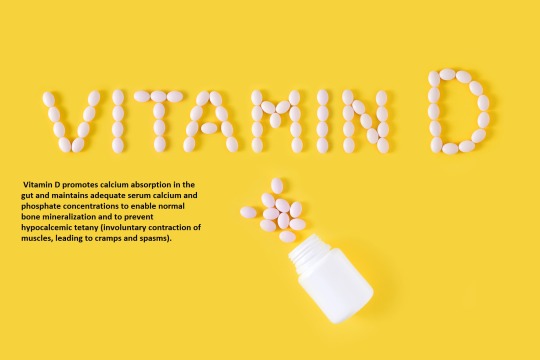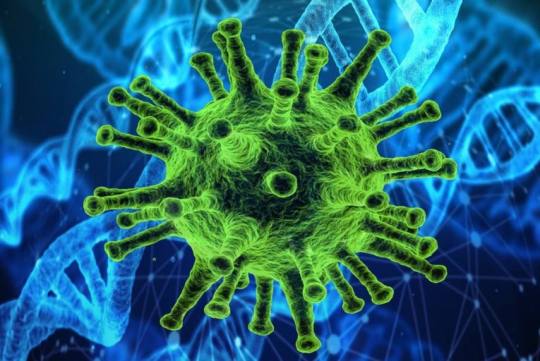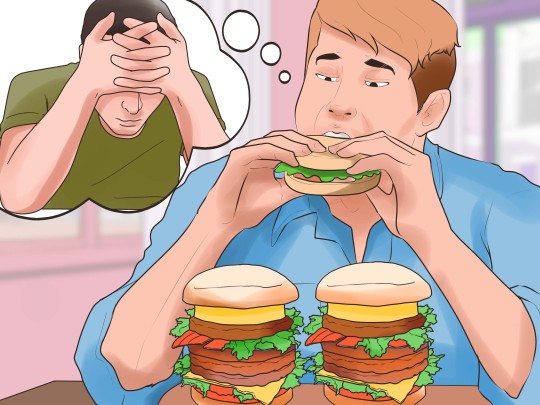Link
Fibromyalgia is a disorder characterized by widespread musculoskeletal pain accompanied by fatigue, sleep, memory, and mood issues.
1 note
·
View note
Link
1 note
·
View note
Photo

Vitamin D is a group of fat-soluble secosteroids responsible for increasing intestinal absorption of calcium, magnesium, and phosphate, and many other biological effects. In humans, the most important compounds in this group are vitamin D3 and D2.
1 note
·
View note
Text
Sudden Infant Death Syndrome (SIDS)
Sudden Infant Death Syndrome (SIDS)
https://drfarooqeliteclinic.blogspot.com/2021/07/sudden-infant-death-syndrome-sids.html
Sudden infant death syndrome is the sudden and unexplained death of a baby younger than 1-year-old. A diagnosis of SIDS is made if the baby's death remains unexplained even after a death scene investigation, an autopsy, and a review of the clinical history.
SIDS is part of a large category of unexpected infant deaths called SUDI (sudden unexpected death in infancy). Babies who die suddenly but the cause of death are later explained (infection, brain abnormality, cardiac dysfunction) also fall into this SUDI category.
Sudden infant death syndrome usually during sleep, of a seemingly healthy baby less than a year old. SIDS is sometimes known as crib death because infants often die in their cribs. Although the cause is unknown, it appears that SIDS might be associated with defects in the portion of an infant's brain that controls breathing and arousal from sleep.
Researchers have discovered some factors that might put babies at extra risk. They've also identified measures you can take to help protect yourself from SIDS. Perhaps the most important is placing your baby on his or her back to sleep.
Causes:
A combination of physical and sleep environmental factors can make an infant more vulnerable to SIDS. These factors vary from child to child.
SIDS is a mysterious syndrome, and by its very definition, the cause cannot be determined. Children's researchers have uncovered strong evidence that SIDS has a biological basis, and are continuing to work towards determining the underlying causes and identifying at-risk babies.
Physical factors:
- Brain defects: Some infants are born with problems that make them more likely to die of SIDS. In many of these babies, the portion of the brain that controls breathing and arousal from sleep hasn't matured enough to work properly.
- Low birth weight: Premature birth or being part of multiple births increases the likelihood that a baby's brain hasn't matured completely, so he or she has less control over such automatic processes as breathing and heart rate.
- Respiratory infection: Many infants who died of SIDS had recently had a cold, which might contribute to breathing problems.
Sleep environmental factors:
The items in a baby's crib and his or her sleeping position can combine with a baby's physical problems to increase the risk of SIDS. Examples include:
- Sleep on the stomach or side: Babies placed in these positions to sleep might have more difficulty breathing than those placed on their backs.
- Sleeping on a soft surface: Lying face down on a fluffy comforter, a soft mattress, or a waterbed can block an infant's airway.
- Sharing a bed: While the risk of SIDS is lowered if an infant sleeps in the same room as his or her parents, the risk increases if the baby sleeps in the same bed with parents, siblings, or pets.
- Overheating: being too warm while sleeping can increase a baby's risk of SIDS.
Risk factors:
SIDS is a mysterious syndrome since by its very definition the cause cannot be determined, but certain risk factors do exist. About 2,300 babies in the united states die of SIDS each year. Some babies are more at risk than others. SIDS is more likely to affect a baby who is between 1 and 4 months old, it is more common in boys than girls, and most deaths occur during the fall, winter, and early spring months.
Factors that may place a baby at higher risk of dying from SIDS include the following:
- Sex: Boys are slightly more likely to die of SIDS.
- Age: Infants are most vulnerable between the second and fourth months of life.
- Race: Reasons that aren't well-understood, nonwhite infants are more likely to develop SIDS.
- Family history: Babies who've had siblings or cousins die of SIDS are at higher risk of SIDS.
Secondhand smoke: Babies who live with smokers have a higher risk of SIDS.
- Being premature: Both being born early and having a low birth weight increase your baby's chances of SIDS.
Maternal risk factors:
During pregnancy, the mother also affects her risk of SIDS, especially if she:
- Smokes cigarettes.
- Uses drugs or alcohol.
- Has inadequate prenatal care.
Prevention:
There's no guaranteed way to prevent SIDS, but you can help your baby sleep more safely by following these tips:
Back to sleep: Place your baby to sleep on his or her back, rather than on the stomach or side, every time you, or alone else, put the baby to sleep for the first year of life. This isn't necessary when our baby's awake or able to roll over both ways without help.
Don't assume that others will place your baby to sleep in the correct position, insist on it. Advise sitters and child care providers not to use the stomach position to calm an upset baby.
Keep the crib as bare as possible: Use a mattress and avoid placing your baby on thick, fluffy padding, such as lambskin or a thick quilt. Don't leave pillows, fluffy toys stuffed animals in the crib. These can interfere with breathing if your baby's face presses against them.
Don't overheat your baby: To keep your baby warm, try a sleep sack or other sleep clothing that doesn't require additional covers. Don't cover your baby's head.
Have your baby sleep in your room: Ideally, your baby should sleep in your room with you, but alone in a crib, bassinet, or other structure designed for infant sleep, for at least six months, and if possible up to a year.
Adult beds aren't safe for infants, A baby can become trapped and suffocate between the headboard slats, the space between the mattress and the bed frame, or the space between the mattress and the wall. A baby can also suffocate if a sleeping parent accidentally rolls over and covers the baby's nose and mouth.
- Breast-feed baby, if possible: Breastfeeding for at least six months lowers the risk of SIDS.
Other theories about why SIDS occurs?
While the cause of SIDS is unknown, many clinicians and researchers believe that SIDS is associated with problems in the ability of the baby to arouse from sleep, to detect low levels of oxygen, or a buildup of carbon dioxide in the blood. When babies sleep face down, they may re-breathe exhaled carbon dioxide. Normally, rising carbon dioxide levels activate nerve cells in the brainstem, which stimulate the brain's respiratory and arousal centers. The baby then wakes up, turns his head, and breathes faster to get more oxygen. SIDS babies, however, may fail to rouse.
The "Triple-risk model" for SIDS has been proposed to explain how SIDS occurs. The model holds that SIDS occurs when three conditions exist simultaneously:
- Infant has an underlying abnormality that makes him unable to respond to low oxygen or high carbon dioxide blood levels.
- The infant is exposed to a triggering event such as sleeping face down on its tummy.
- These events occur during a vulnerable stage in the infant's development i.e. the first 6 months of life.
1 note
·
View note
Photo

https://drfarooqeliteclinic.blogspot.com/2021/06/green-fungus.html
Aspergillosis is an infection caused by Aspergillus, a common mold that lives indoors and outdoors.
1 note
·
View note
Photo

https://drfarooqeliteclinic.blogspot.com/2021/06/yellow-fungus.html
The second wave of coronavirus is finally slowing down with daily cases in India dipping to below 2 lakhs, but new fungal infections have followed in its aftermath, the most recently reported one being the deadly "Yellow Fungus".
#covid-19#black fungus#white fungus#yellow fungus#coronavirus india#second wave#coronavirus#fungal infection#infection#mucor septic#Mucormycosis#Aspergillus Flavus
1 note
·
View note
Link
Just when the government was dealing with the black fungus epidemic, another fungal infection- white fungus aka Asperillosisi has started to spread its wings
1 note
·
View note
Photo

https://drfarooqeliteclinic.blogspot.com/2021/05/mucormycosis-black-fungal-disease.html
1 note
·
View note
Photo

For those how to want to learn true Homeopathy. Learn through the live case, Learn rubric directly from the patients, videos, and many more so please enroll your self
1 note
·
View note
Photo

https://drfarooqeliteclinic.blogspot.com/2021/04/overeating.html
1 note
·
View note
Link
1 note
·
View note
Video
youtube
Homoeomirror app launch,
1 note
·
View note
